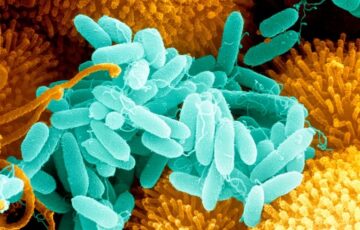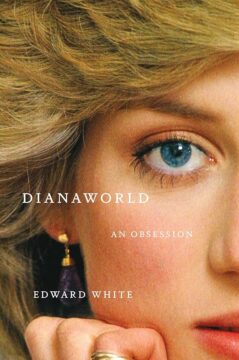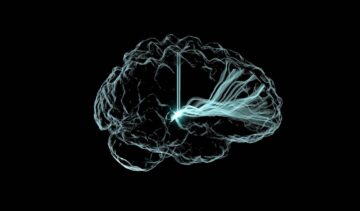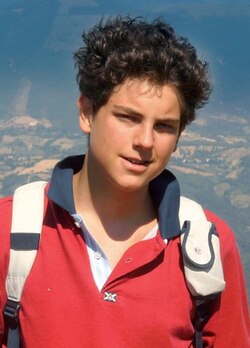Charlotte Shane at Bookforum:
 WHEN THE WRITER MAYUMI INABA meets Mii, the kitten who will become “the center of her life,” the animal is stuck in a school fence, screaming for rescue in the night air: a “little white dot” deposited there “out of malice or mischief” by a culprit long departed. There is no sign of her mother or littermates, no evidence that she is owned or loved or named. She is flea-bitten, only a few days old, exhausted, and of obscure origin. “All I knew,” Inaba writes of the moment she collected this defenseless being into her hands, “was that she must have felt utterly desperate.” Any cat person worth their fur-covered clothes can guess what happens next; Inaba is subsumed in devotion to this creature, with its face “the size of a coin.” Her life will be ruled by Mii until Mii’s own life ends, and that is right and good.
WHEN THE WRITER MAYUMI INABA meets Mii, the kitten who will become “the center of her life,” the animal is stuck in a school fence, screaming for rescue in the night air: a “little white dot” deposited there “out of malice or mischief” by a culprit long departed. There is no sign of her mother or littermates, no evidence that she is owned or loved or named. She is flea-bitten, only a few days old, exhausted, and of obscure origin. “All I knew,” Inaba writes of the moment she collected this defenseless being into her hands, “was that she must have felt utterly desperate.” Any cat person worth their fur-covered clothes can guess what happens next; Inaba is subsumed in devotion to this creature, with its face “the size of a coin.” Her life will be ruled by Mii until Mii’s own life ends, and that is right and good.
Cat people are the only conceivable audience for Mornings Without Mii, an uneventful memoir in which a Japanese woman—married at the beginning of the book, later divorced—loves and lives with a cat who succumbs to old age. Who else would be entertained by meticulous descriptions of Mii sleeping, playing in newspapers, sniffing everything she comes across, lapping up milk?
more here.
Enjoying the content on 3QD? Help keep us going by donating now.

 A strain of bacterium that often causes infections in hospital can break down plastic, research published this week in Cell Reports reveals
A strain of bacterium that often causes infections in hospital can break down plastic, research published this week in Cell Reports reveals ‘Always be nice to girls, you never know who they’ll become’ was a common saying among the generation of upper-class Englishwomen born around 1900. Diana Spencer’s life was a spectacular demonstration of its wisdom. It is now almost impossible to conceive what little consequence accrued to a third daughter, born between two prayed-for boys – the elder dead in infancy, the younger living – in a primogeniture-practising family in the middle of the last century. Yet this lowly person became the most famous woman in the world. We can only imagine how her brother felt.
‘Always be nice to girls, you never know who they’ll become’ was a common saying among the generation of upper-class Englishwomen born around 1900. Diana Spencer’s life was a spectacular demonstration of its wisdom. It is now almost impossible to conceive what little consequence accrued to a third daughter, born between two prayed-for boys – the elder dead in infancy, the younger living – in a primogeniture-practising family in the middle of the last century. Yet this lowly person became the most famous woman in the world. We can only imagine how her brother felt. The opposite of déjà vu is “jamais vu”, when something you know to be familiar feels unreal or novel in some way. In our
The opposite of déjà vu is “jamais vu”, when something you know to be familiar feels unreal or novel in some way. In our 
 If history is any guide, rescuing the rights now being rolled back will require a range of tactics, including vigorous protest itself. It will also require building broad and unwavering consensus about the speciousness of the rationales being offered for today’s draconian crackdowns. Those have taken three principal forms. First, the Gaza protests were said to be
If history is any guide, rescuing the rights now being rolled back will require a range of tactics, including vigorous protest itself. It will also require building broad and unwavering consensus about the speciousness of the rationales being offered for today’s draconian crackdowns. Those have taken three principal forms. First, the Gaza protests were said to be  How consciousness emerges in the brain is the ultimate mystery. Scientists generally agree that consciousness relies on multiple brain regions working in tandem. But the areas and neural connections supporting our perception of the world have remained elusive.
How consciousness emerges in the brain is the ultimate mystery. Scientists generally agree that consciousness relies on multiple brain regions working in tandem. But the areas and neural connections supporting our perception of the world have remained elusive. C
C E
E Beyle does not say how long he stared up at the fresco, but it was long enough to reach ‘that supreme degree of sensibility where the divine intimations of art merge with the impassioned sensuality of emotion.’ Upon leaving the church, he wrote: ‘I was seized with a fierce palpitation of the heart …; the well-spring of life was dried up within me, and I walked in constant fear of falling to the ground.’
Beyle does not say how long he stared up at the fresco, but it was long enough to reach ‘that supreme degree of sensibility where the divine intimations of art merge with the impassioned sensuality of emotion.’ Upon leaving the church, he wrote: ‘I was seized with a fierce palpitation of the heart …; the well-spring of life was dried up within me, and I walked in constant fear of falling to the ground.’ 
 A full-blown humanitarian emergency in Gaza is no longer looming. It is here, and it is catastrophic.
A full-blown humanitarian emergency in Gaza is no longer looming. It is here, and it is catastrophic.